Upgrade Rate of Pure Flat Epithelial Atypia Diagnosed at Core Needle Biopsy: A Systematic Review and Meta-Analysis
- PMID: 33778758
- PMCID: PMC7983762
- DOI: 10.1148/rycan.2021200116
Upgrade Rate of Pure Flat Epithelial Atypia Diagnosed at Core Needle Biopsy: A Systematic Review and Meta-Analysis
Abstract
Purpose: To perform a systematic review and meta-analysis to calculate the pooled upgrade rate of pure flat epithelial atypia (FEA) diagnosed at core needle biopsy (CNB).
Materials and methods: A PubMed and Embase database search was performed in December 2019. Preferred Reporting Items for Systematic Reviews and Meta-Analyses guidelines were followed. Study quality and publication bias were assessed. The upgrade rate of pure FEA to cancer, invasive carcinoma, and ductal carcinoma in situ (DCIS), as well as the co-occurrence rate of atypical ductal hyperplasia (ADH), with 95% CIs were calculated. A random effect model was used to integrate the proportions and their corresponding 95% CI. Study heterogeneity was calculated using τ2 and I 2 .
Results: A total of 2482 cases of pure FEA across 42 studies (mean age range, 46-59 years) met inclusion criteria to be analyzed. Significant study heterogeneity was identified (τ2 = 0.001, I 2 = 67%). The pooled upgrade rates reported for pure FEA were 5% (95% CI: 3%, 6%) for breast cancer, 1% (95% CI: 0%, 2%) for invasive carcinoma, and 2% (95% CI: 1%, 3%) for DCIS. When more than 90% of calcifications were removed at CNB, the pooled upgrade rate was 0% (95% CI: 0%, 2%). The pooled co-occurrence rate of ADH at surgical excision was 17% (95% CI: 12%, 21%). Study quality was medium to high with a risk of publication bias (P < .01).
Conclusion: Pure FEA diagnosed at CNB should be surgically excised due to the pooled upgrade rate of 5% for breast cancer. If more than 90% of the targeted calcifications are removed by CNB for pure FEA, close imaging follow-up is recommended.Keywords: Biopsy/Needle Aspiration, Breast, MammographySupplemental material is available for this article.© RSNA, 2021.
2021 by the Radiological Society of North America, Inc.
Conflict of interest statement
Disclosures of Conflicts of Interest: R.A.W. disclosed no relevant relationships. S.J.L. disclosed no relevant relationships. M.EM. disclosed no relevant relationships. B.Z. disclosed no relevant relationships. M.C.M. Activities related to the present article: disclosed no relevant relationships. Activities not related to the present article: author is board member of the Radiological Society of North America and the American College of Radiology (ACR); author’s institution received Innovation Grant from ACR; author received royalties from Elsevier for breast textbook; author is editorial board member of Contemporary Diagnostic Radiology. Other relationships: disclosed no relevant relationships.
Figures

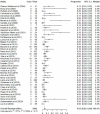
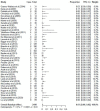
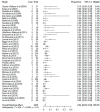

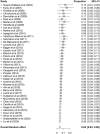
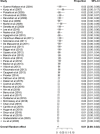
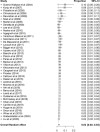


Similar articles
-
Upgrade Rate of Percutaneously Diagnosed Pure Atypical Ductal Hyperplasia: Systematic Review and Meta-Analysis of 6458 Lesions.Radiology. 2020 Jan;294(1):76-86. doi: 10.1148/radiol.2019190748. Epub 2019 Oct 29. Radiology. 2020. PMID: 31660803
-
Flat epithelial atypia on core needle biopsy does not always mandate excisional biopsy.Breast J. 2020 Apr;26(4):679-684. doi: 10.1111/tbj.13507. Epub 2019 Sep 28. Breast J. 2020. PMID: 31562689
-
Upgrade rate of percutaneously diagnosed pure flat epithelial atypia: systematic review and meta-analysis of 1,924 lesions.J Osteopath Med. 2022 Feb 14;122(5):253-262. doi: 10.1515/jom-2021-0206. J Osteopath Med. 2022. PMID: 35150124
-
Atypical ductal hyperplasia bordering on DCIS on core biopsy is associated with higher risk of upgrade than conventional atypical ductal hyperplasia.Breast Cancer Res Treat. 2020 Dec;184(3):873-880. doi: 10.1007/s10549-020-05890-1. Epub 2020 Aug 28. Breast Cancer Res Treat. 2020. PMID: 32857242 Free PMC article.
-
Flat epithelial atypia: are we being too aggressive?Breast Cancer Res Treat. 2020 Jan;179(2):511-517. doi: 10.1007/s10549-019-05481-9. Epub 2019 Nov 7. Breast Cancer Res Treat. 2020. PMID: 31701300
Cited by
-
Isolated Flat Epithelial Atypia: Upgrade Outcomes After Multidisciplinary Review-Based Management Using Excision or Imaging Surveillance.J Breast Imaging. 2023 Jul 22;5(5):575-584. doi: 10.1093/jbi/wbad049. eCollection 2023 Sep-Oct. J Breast Imaging. 2023. PMID: 37744722 Free PMC article.
-
Malignant upgrade in lesions of uncertain malignant potential in the breast (B3 lesions) - is open excision always necessary?Breast Cancer Res Treat. 2025 May;211(1):173-183. doi: 10.1007/s10549-025-07632-7. Epub 2025 Feb 17. Breast Cancer Res Treat. 2025. PMID: 39960605 Free PMC article.
-
Navigating the Uncertainty of B3 Breast Lesions: Diagnostic Challenges and Evolving Management Strategies.J Pers Med. 2025 Jan 18;15(1):36. doi: 10.3390/jpm15010036. J Pers Med. 2025. PMID: 39852228 Free PMC article. Review.
-
Consensus document on preoperative diagnostic procedures in breast lesions.Pathologica. 2025 Jun;117(3):178-198. doi: 10.32074/1591-951X-1113. Pathologica. 2025. PMID: 40626666 Free PMC article.
-
B3 Lesions at Vacuum-Assisted Breast Biopsy under Ultrasound or Mammography Guidance: A Single-Center Experience on 3634 Consecutive Biopsies.Cancers (Basel). 2021 Oct 29;13(21):5443. doi: 10.3390/cancers13215443. Cancers (Basel). 2021. PMID: 34771606 Free PMC article.
References
-
- Grabenstetter A, Brennan S, Salagean ED, Morrow M, Brogi E. Flat Epithelial Atypia in Breast Core Needle Biopsies With Radiologic-Pathologic Concordance: Is Excision Necessary? Am J Surg Pathol 2020;44(2):182–190. - PubMed
-
- Rudin AV, Hoskin TL, Fahy A, et al. Flat Epithelial Atypia on Core Biopsy and Upgrade to Cancer: a Systematic Review and Meta-Analysis. Ann Surg Oncol 2017;24(12):3549–3558. - PubMed
-
- Acott AA, Mancino AT. Flat epithelial atypia on core needle biopsy, must we surgically excise? Am J Surg 2016;212(6):1211–1213. - PubMed
-
- Becker AK, Gordon PB, Harrison DA, et al. Flat ductal intraepithelial neoplasia 1A diagnosed at stereotactic core needle biopsy: is excisional biopsy indicated? AJR Am J Roentgenol 2013;200(3):682–688. - PubMed
Publication types
MeSH terms
LinkOut - more resources
Full Text Sources
Other Literature Sources
Medical
Miscellaneous

